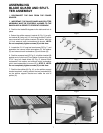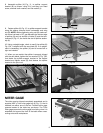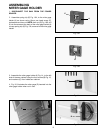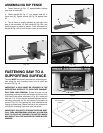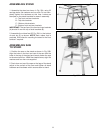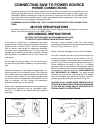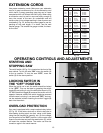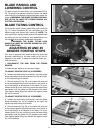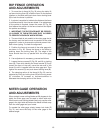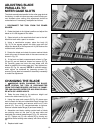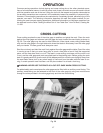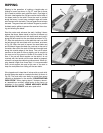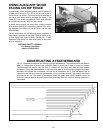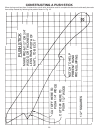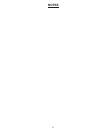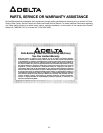
RIP FENCE OPERATION
AND ADJUSTMENTS
1. To move the rip fence (A) Fig. 30, along the table, lift
up fence locking lever (B), slide the fence to the desired
location on the table and push down fence locking lever
(B) to lock the fence in position.
2. A pointer is supplied to indicate the distance the fence
is positioned away from the saw blade. If an adjustment
to the pointer is required, loosen the screw (C) Fig. 30,
that fastens the pointer to the fence bracket and adjust
the pointer accordingly.
3. IMPORTANT: THE RIP FENCE MUST BE PROPER-
LY ALIGNED TO THE MITER GAGE SLOT IN ORDER
TO PREVENT KICKBACK WHEN RIPPING.
4. The saw blade is set parallel to the miter gage slot at
the factory and the fence must be parallel to the miter
gage slot in order to do accurate work and prevent kick-
back when ripping. To check the alignment:
5. Position the fence at one end of the miter gage slot,
as shown in Fig. 30. Clamp the fence to the table by
pushing down the locking lever (B). The edge of the
fence should then line up parallel with the miter gage
slot.
6. If an adjustment is necessary, proceed as follows:
7. Loosen the two screws (D) Fig. 30, and lift up locking
lever (B). Then while holding the fence bracket (F) firmly
toward the front of the saw, move the rear end of the
fence (A) until it is parallel with the miter gage slot. Then
tighten two screws (D) and push down locking lever (B).
8. The clamping action of the fence (A) Fig. 30, can be
adjusted by lifting up locking lever (B) and turning screw
(E) clockwise to increase or counterclockwise to
decrease the clamping action of the fence.
MITER GAGE OPERATION
AND ADJUSTMENTS
When straight cross-cutting (blade set 90 degrees to the
table) the miter gage can be used in either table slot.
When bevel cross-cutting (blade tilted) only use the miter
gage in the right table slot where the blade is tilted away
from the miter gage and your hands.
To operate the miter gage, simply loosen lock knob (E)
Fig. 31, and move the body of the miter gage to the
desired angle.
Fig. 31
Fig. 30
D
E
F
B
C
A
E
15



